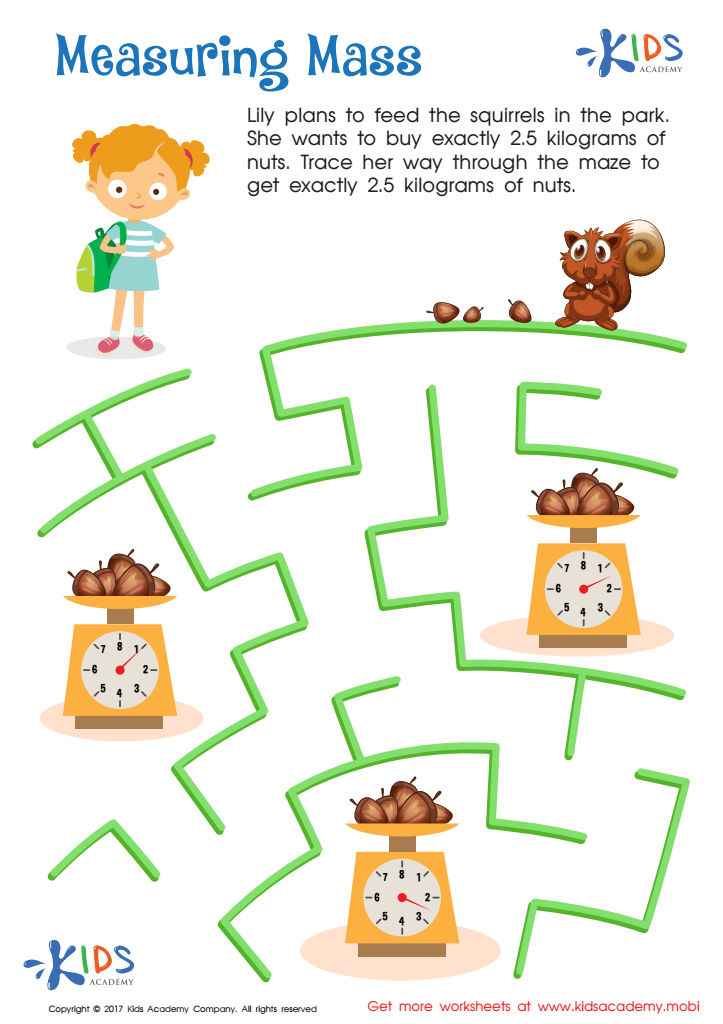Unit conversion comprehension Worksheets for Kids
1 filtered results
-
From - To


Measuring Mass Worksheet
Question/Answer
What are some effective activities to train students’ Unit conversion comprehension skill when teaching them about Measurement?
Effective activities for training students' unit conversion skills include interactive worksheets focusing on real-life scenarios, engaging in measurement scavenger hunts around the classroom or school, utilizing online conversion games or apps, creating flip books for quick reference, and incorporating hands-on experiments that require measurement and conversion, such as cooking projects or science experiments.
How to train the Unit conversion comprehension skill in Grade 3 students learning about Measurement?
To train Grade 3 students in unit conversion comprehension for measurement, engage them in interactive activities such as real-life application problems, use of visual aids like conversion charts, hands-on practice with measuring tools, and playing measurement games. Incorporating storytelling that involves units of measurement can also enhance understanding and retention. Regular practice and reinforcement are key.
How to test a Grade 3 student’s Unit conversion comprehension skills?
To test a Grade 3 student's unit conversion comprehension skills, provide them with simple conversion tasks involving lengths (e.g., inches to feet), volumes (e.g., cups to pints), and weights (e.g., pounds to ounces). Use visual aids, real-life examples, and ensure problems are appropriate for their age level. Quiz them with both multiple-choice and open-ended questions to assess understanding.
 Assign to the classroom
Assign to the classroom












